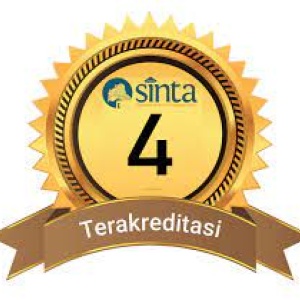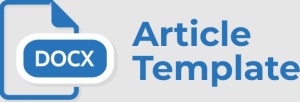Kesehatan dan Perobatan Melayu: Sebuah Kearifan Lokal dalam Naskah Pulau Penyengat
DOI:
https://doi.org/10.37014/jumantara.v11i1.823Keywords:
Local wisdom, Actualization, Flora, MantraAbstract
Health has become an essential part among Malay communities. Keeping healthy life has long been a tradition, especially in Pulau Penyengat with the existence of a site known as gedung tabib or drug store. The evidence of local wisdom also appears in several manuscripts, among which are entitled Ilmu Tabib, Obat-Obatan Melayu, and Rumah Obat in the collection of Yayasan Indrasakti. The discussion herewith is focusing on the typical medical system of Malay communities to keep their health life with the hope to socialize it to later generation as an invaluable legacy of the former generation. Qualitative methods were applied in the analysis of the primary data taken from the collections of the manuscripts of Yayasan Indrasakti that have been transliterated. The results of the analysis showed important clues on how the traditional healer had diagnosed health. Cure could then be prescribed based on its symptoms. The medical process includes medicinal herbs taken from flora and fauna given with mythical spell. In conclusion, the manuscripts clearly indicate that there was a tradition among Malay communities to keep them healthy, and this form of local wisdom needs preservation for later generation.References
Ahimsa-Putra, Heddy Shri, 2016. Konstruksi Sosial dalam Tradisi Keagamaan. Jakarta: Khatulistiwa Press.
Forster, George M. dan Anderson. 1978. Medical Anthropology. New York: John Wiley & Son.
Hidayatullah, Dede. 2019. Naskah Pengobatan di Kalimantan Selatan. Jakarta: Perpustakaan Nasional, Jakarta.
Lestyawati, Endang.1984. Pengobatan Tradisional di Balekerto. Tesis Universitas Gadjah Mada. Yogyakarta: Universitas Gadjah Mada.
Kamus Nesar Bahasa Indonesia. 2008. Jakarta: Pusat Bahasa, Kementerian Pendidikan Nasional.
Kridalaksana, Harimurti. 2004. Raja Ali Haji: Pembuka Cakrawala Bahasa dalam Dunia Melayu dalam Sejarah Perjuangan Raja Ali Haji: Sebagai Bapak Bahasa Indonesia. Pekanbaru: Unri Press.
Mu"jizah. 2013. Skriptorium Naskah Riau. Yogyakarta: Deandra.
-----------. 2016. Naskah Usada sebagai Kearifan Lokal Masyarakat Bali: Sebuah Penelitian Awal. Jurnal Dialektika, Vol3, No.2, Desember 2016.
Mu"jizah (ed.). 2017. Dinamika Pernaskahan Nusantara. Jakarta: Prenadamedia.
Purwanto, Didik. 2018. Kitab Tibb. Jakarta: Perpustakaan Nasional, Jakarta.
Putten, Jan van der dan Al Azhar. 1995. Di dalam Berkekalan Persahabatan : In Everlansting Friendship Letter from Raja Ali Haji. Leiden: Department of Language and Cultures of South-east Asia and Oceania.
Renawati, Pande Wayan. 2011. Naskah Usada rare: Teknik Menjaga Kesehatan Secara Herbal Terhadap Anak-Anak Bali. Jumantara, Vol. 2. No.2, Oktober 2011.
Rochmiatun, Endang. 2011. Sejarah Pengobatan Tradisional di Palembang: Kajian Berdasarkan Naskah dan Tradisi Lisan. Palembang: IAIN Raden Fatah.
Sedyawati, Edi. 1997. Naskah dan Pengkajiannya: Tipologi Pengguna. Makalah dalam Simposium Masyarakat Pernaskahan Nusantara.
Subalidinata, R.S. 1985. Primbon dalam Kehidupan Masyarakat Jawa. Jakarta: Aksara.
Sudardi, Bani. 2011. Deskripsi Antropologis Medis: Manfaat Binatang dalam Tradisi pengobatan Jawa. Jumantara, Vol. 2, No.2. Tahun 2011.
Undang-Undang RI. No. 23 Tahun 1992 Tentang Kesehatan.
Wijayakusuma, Hembing. 1992. Terapi Akupuntur dengan Sengatan Bisa Lebah. Jakarta: Antropologi Kesehatan Indonesia, Jilid I.
Yunos, Yusmilayati dan Noriah Mohamed. 2011. Ramuan Flora dan Fauna dalam Mujarobat Melayu. Jumantara, Vol. 2 No. 2, Tahun 2011.
Downloads
Published
Issue
Section
License
- This statement is the author's commitment to respect copyright, both in terms of citing other people's work and utilizing journal content. If necessary, the author can send an Authenticity Statement of Article stating that "this work is the author's original idea and has never been sent to another publisher and published in any publication"
- The author retains copyright.
- The moral rights of publication belong to the author.
- Formal legal aspects in the use of journal publications refer to the Creative Commons Attribution-ShareAlike 4.0 (CC BY-SA) license, which means that journal content can be used freely for any purpose.









